Compared: 2022 Porsche Macan vs. 2022 Porsche Cayenne
You won't be disappointed with either of these Porsche SUVs—especially the Cayenne.
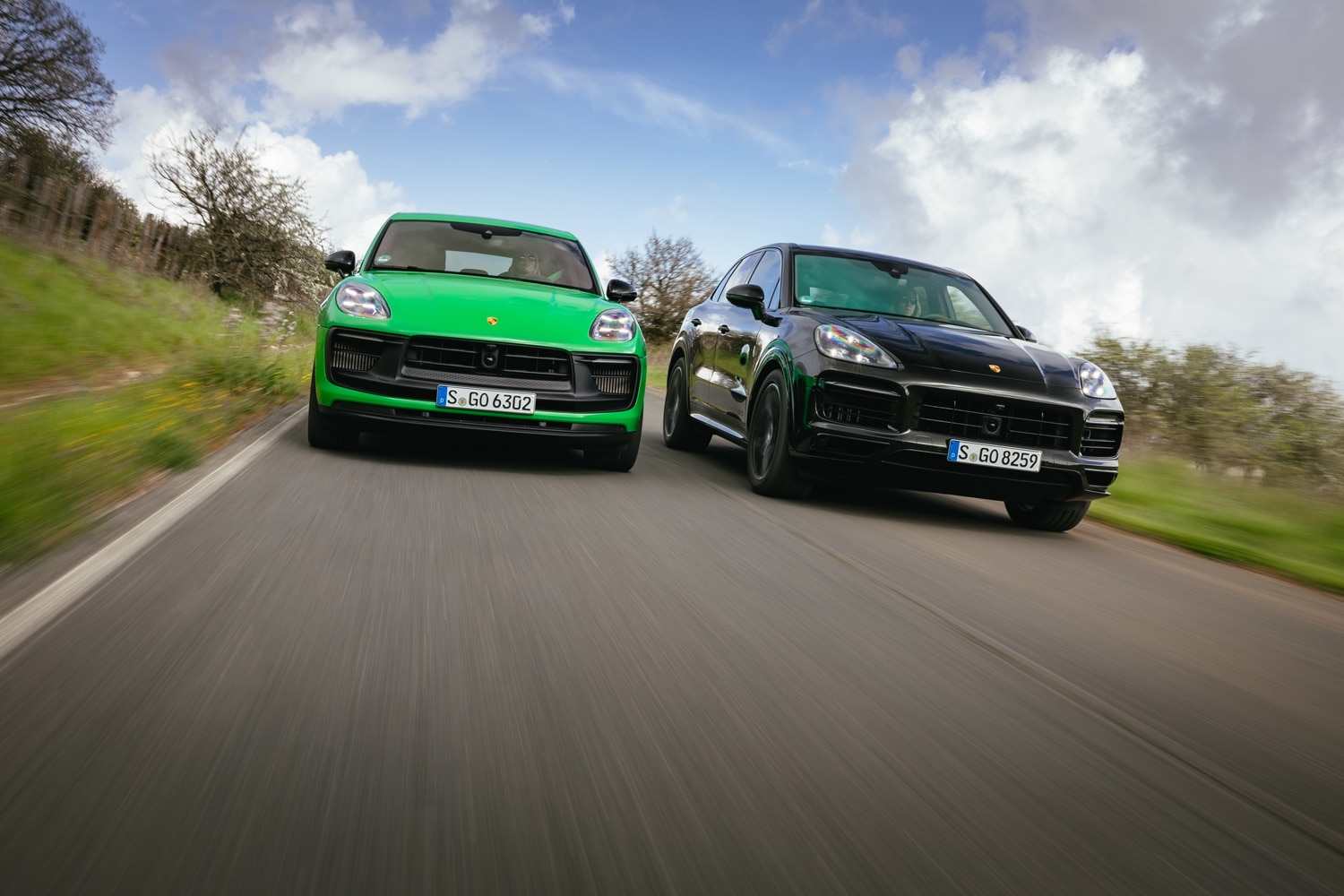 Porsche
Porsche
Article QuickTakes:
If you’re in the market for a Porsche SUV, chances are you’re unaccustomed to settling. You want the best, and more often than not, you get it. But perhaps you’re concerned—however marginally—with practically. You are shopping for an SUV, after all. So which will it be: the nimble Macan or the robust Cayenne? This comparison may help you decide.
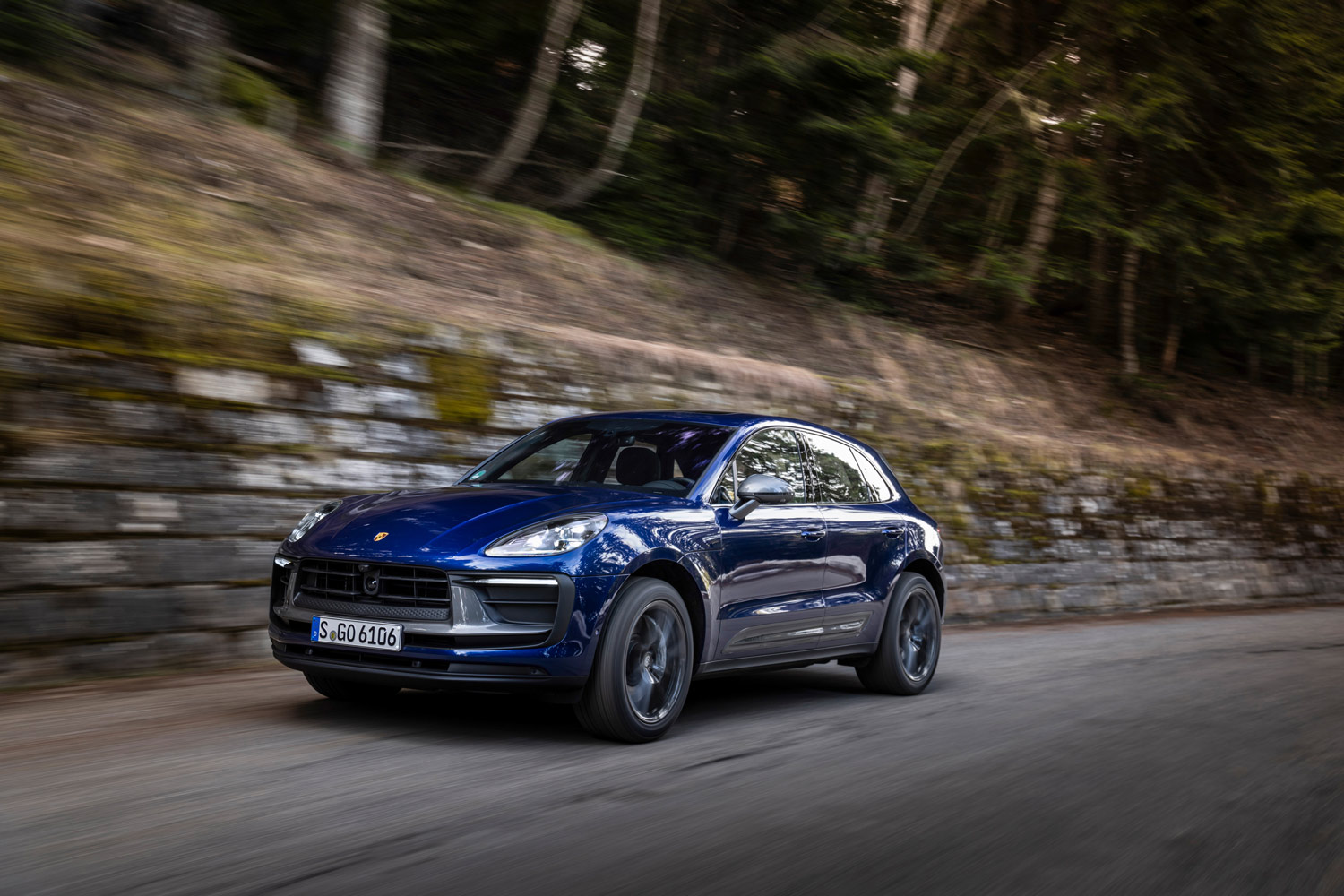 Porsche | Macan
Porsche | Macan
Porsche Macan vs. Porsche Cayenne: Price
Few would define either of these crossovers as affordable. The compact Macan offers 261 horsepower and starts at $58,950. In typical Porsche fashion, the outlay rises rapidly as you tack on letters to the model name: Expect to pay at least $64,550 for the sporty-looking Macan T, $69,850 for the 375-hp Macan S, and $84,350 for the 434-hp Macan GTS.
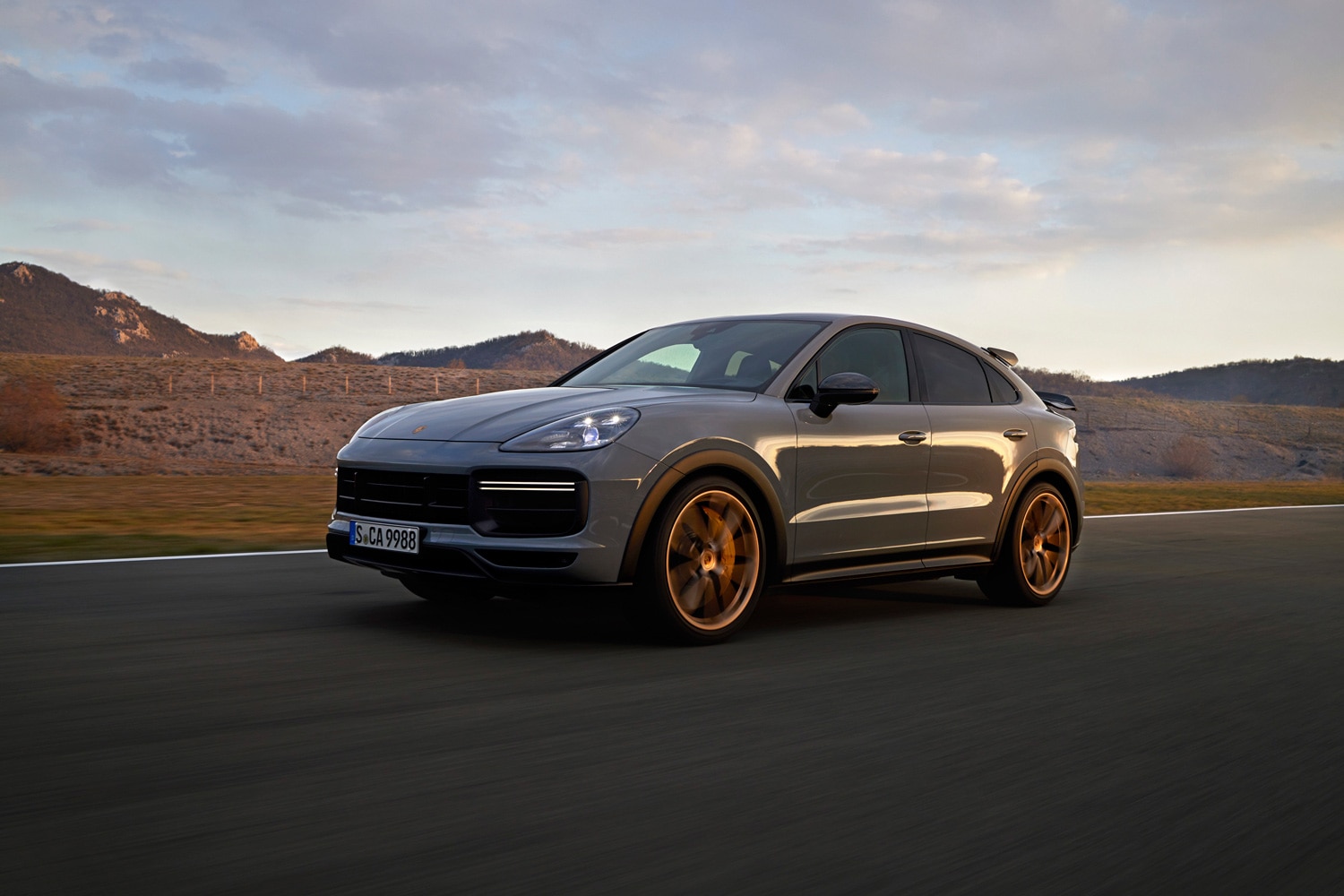 Porsche | Cayenne
Porsche | Cayenne
Step up to the midsize Cayenne and you’ll have your pick of 19 models, most of which make the Macan feel like a bargain. The base Cayenne with 335 ponies will set you back $73,650. Opt for the mechanically identical slantback Coupe variant and the price climbs to $82,150. Above that, you’ll find several trim levels, each offering a different powertrain and most coming in standard-body, Coupe, and gussied-up Platinum versions. In their most basic forms, they are the 455-hp E-Hybrid ($87,950), the 434-hp S ($92,350), the 453-hp GTS ($114,550), the 541-hp Turbo ($137,350), the 670-hp Turbo S E-Hybrid ($172,750), and the range-topping, 631-hp Turbo GT ($190,150).
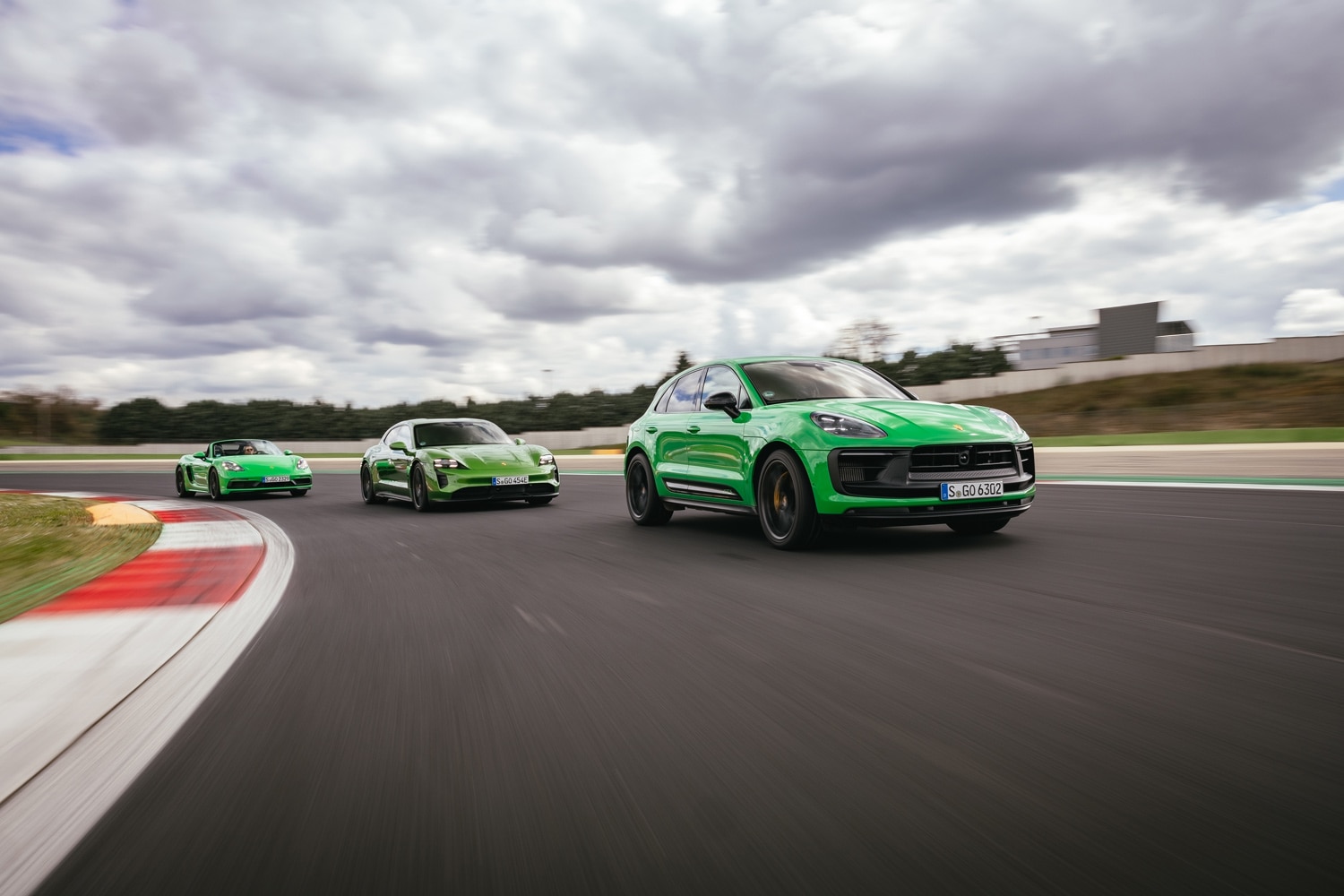 Porsche | Macan
Porsche | Macan
Porsche Macan vs. Porsche Cayenne: Performance
The entry-level Macan and T employ a 261-hp, turbocharged, 2.0L four-cylinder and can hit 60 mph in 6.0 seconds and 5.8 seconds, respectively. The other two trims up the ante with a twin-turbo, 2.9L V6. It allows the 375-hp S model to reach 60 in 4.6 seconds and the 434-hp GTS to do it in 4.3.
The lowliest Cayenne makes do with a 335-hp, turbocharged, 3.0L V6 and hits 60 mph in 5.9 seconds. The twin-turbo, 2.9L V6 engine makes its way into the Cayenne lineup at the S trim level and spurs the heavier SUV to 60 in 4.9 seconds. The E-Hybrid might be a better bargain, though, because it boasts more power (455 ponies) and quicker acceleration (4.7 seconds) than the S for a lower starting price.
 Porsche | Cayenne
Porsche | Cayenne
Then there are the twin-turbo, 4.0L V8 models, each tuned for a different output level and acceleration target. The GTS offers 453 ponies and a 0-60-mph time of 4.5 seconds or 4.2 seconds in Coupe form. The Turbo makes 541 horsepower and hits the mark in 3.9 seconds or 3.7 seconds in Coupe guise.
The 631-hp, Coupe-only Turbo GT is quickest of the bunch with a 3.1-second 0-60-mph time. The more powerful Turbo S E-Hybrid is a half-second slower, as its battery and electric motor add a fair amount of weight. The Turbo GT’s carbon-ceramic brakes, sport exhaust, and rear-axle steering come standard, and give the Turbo GT an extra edge.
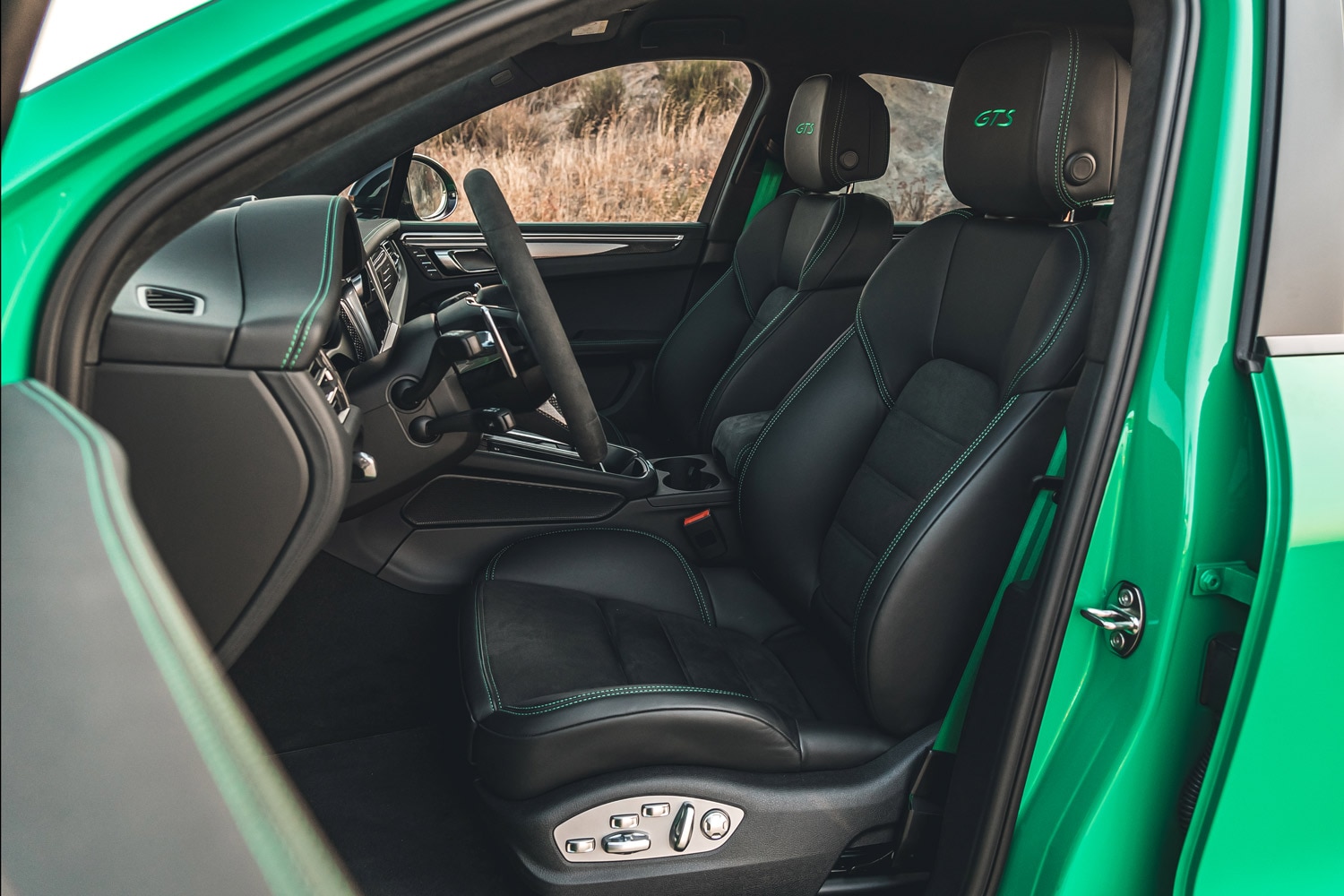 Porsche | Macan
Porsche | Macan
Porsche Macan vs. Porsche Cayenne: Interior
Porsche is famous for its long options lists, which offer practically anything you could want for a lofty price. The basic interior, though, is somewhat austere. Both the Macan and the Cayenne come standard with eight-way power-adjustable front seats; they wear leatherette and fabric in the Macan and real leather in the Cayenne.
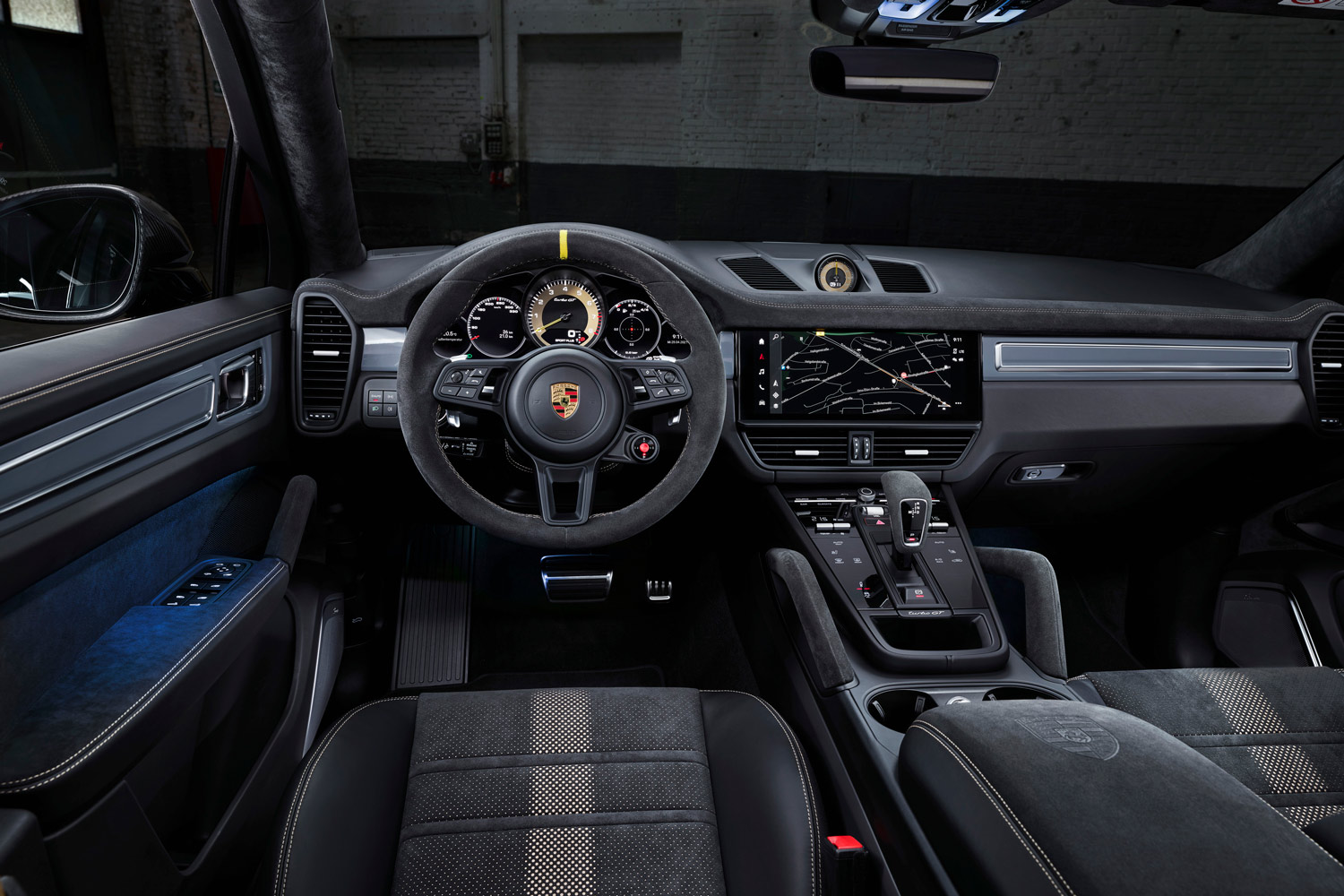 Porsche | Cayenne
Porsche | Cayenne
The larger crossover boasts a larger touchscreen (12.3 inches to the Macan’s 10.9-inch unit) and significantly more room, with the Macan offering 96 cubic feet of cabin space and 17 cubes of cargo volume, and the Cayenne, 107 and 27 cubes, respectively.



